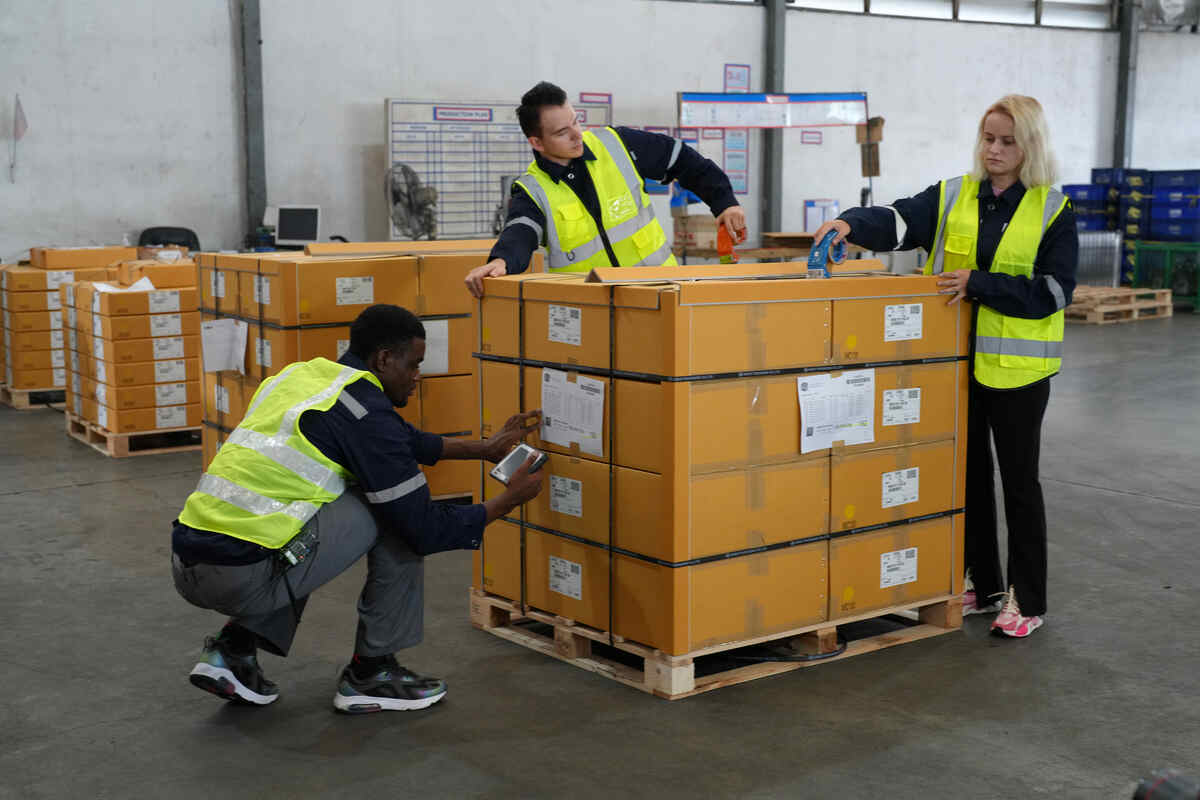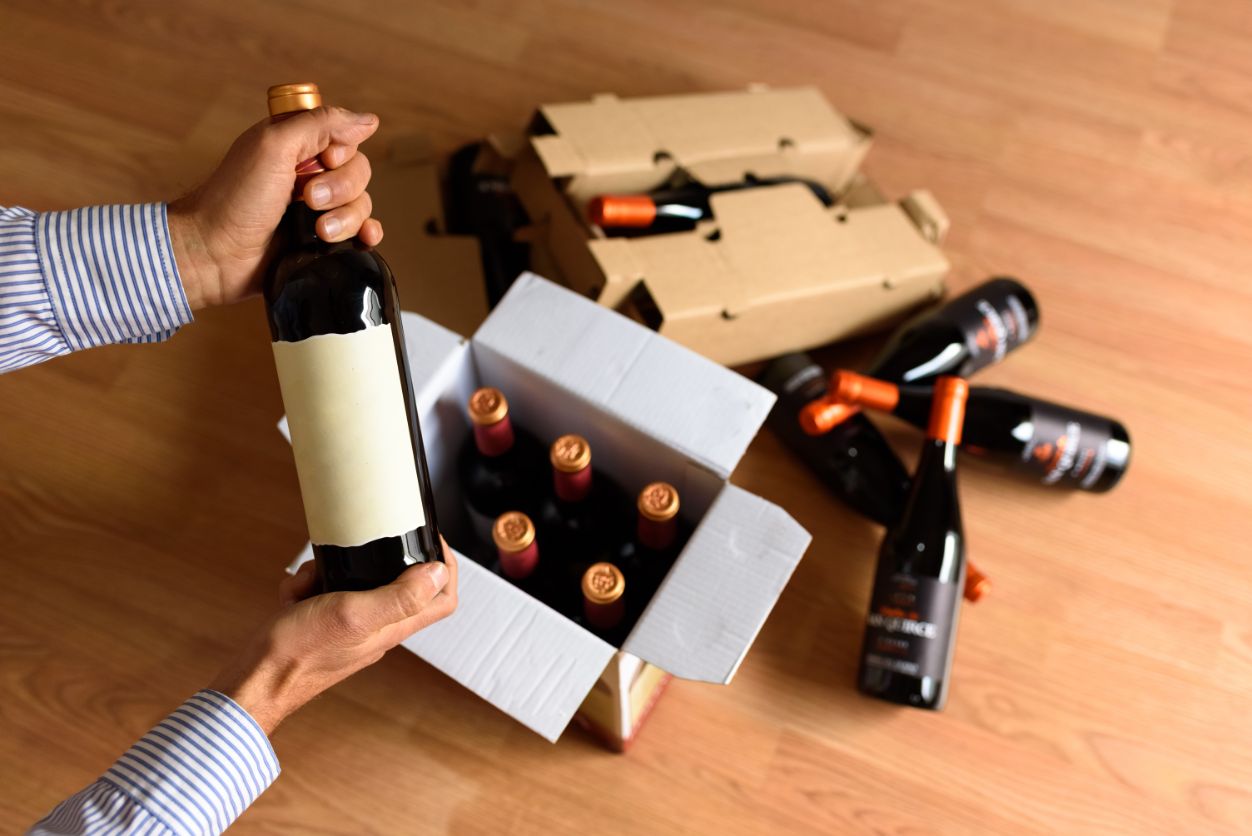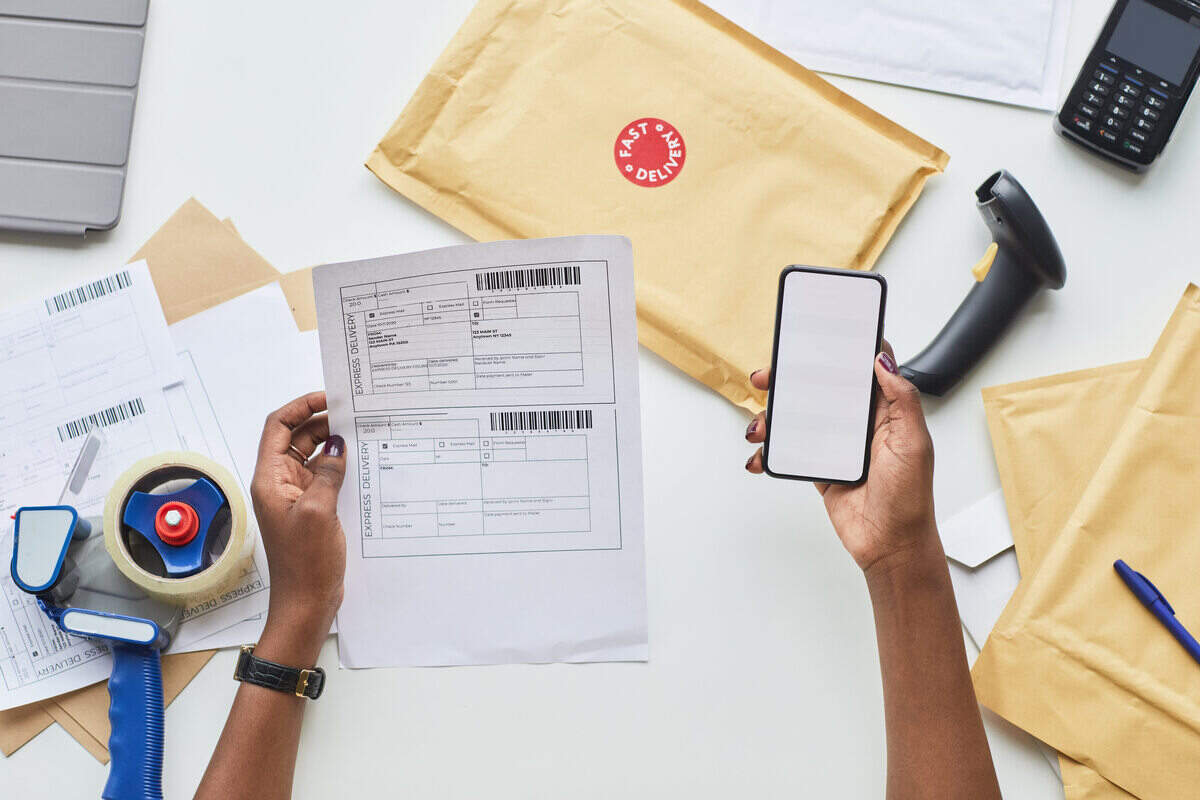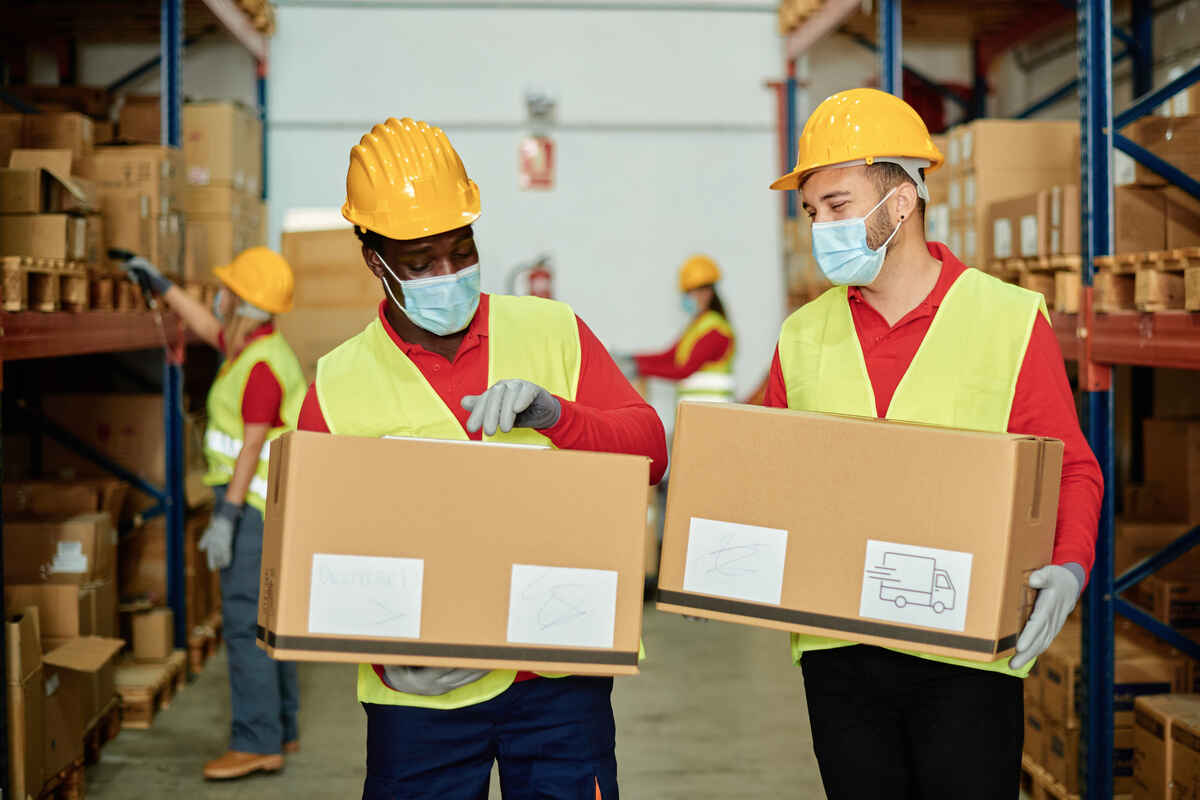What Is the Chain of Custody in Logistics & Why Is It Important?

As a business owner, you're no doubt aware of how important the logistics process is. In fact, it's the lifeblood of your business. But have you ever given much thought to the "chain of custody" within that process? If not, you could be putting your entire business at risk.
So, what is the chain of custody, exactly? How does it work, and why is it crucial to your success? Keep reading because, in this blog, we'll explore all of this and more.
First things First: What is the Chain of Custody in Logistics?
The entire logistics process can be broken down into a series of procedures, all of which make up the so-called "chain of custody." Chain of custody refers to the process through which a product is transferred between different parties and tracked at each step to ensure it remains safe, secure, and in good condition.
In simpler terms, the chain of custody involves the chronological documentation and tracking of a product from the moment it is produced to the moment it reaches the end consumer. This documentation includes information such as the product's origin, its conditions during transit, and who has had custody of it at each stage.

Imagine your supply chain as a journey – a crucial expedition from point A to point B involving goods passing through various hands. The "chain of custody" in this logistical odyssey is the meticulous roadmap that tracks every twist and turn of this journey. It's the detailed documentation, digital footprints, and checkpoints that guarantee the integrity, security, and accountability of your goods from inception to delivery.
Why Is the Chain of Custody Important in Logistics?
What is the chain of custody's importance? In today's business environment, supply chain transparency is more important than ever, and the chain of custody provides just that, making it possible to track a product's progress in real-time. This level of transparency is essential when dealing with complex supply chains and trading partners all over the world, where opaque processes can lead to errors, delays, and even loss of revenue.
Proper chain of custody documentation can also provide evidence collection in case of disputes. In some industries, such as food products or pharmaceuticals, it's important to have real evidence of product conditions and custody, as it could mean the difference between life and death for the end consumer.
Essentially, it's the guardian angel of your inventory, ensuring that at every stage – be it production, warehousing, transportation, or delivery – your goods are accounted for, safe, and unaltered. This process isn't just a buzzword; it's the backbone that ensures your high-value goods, sensitive pharmaceuticals, or critical supplies reach their destination unscathed, meeting compliance standards and bolstering trust every step of the way.
How Does the Chain of Custody Work?
There are many chain of custody systems available, each with varying levels of complexity. The most robust chain of custody model is one that provides real-time visibility into the entire process from the moment a shipment is picked up to its final destination.
These systems often include a variety of different tools and technologies, such as GPS tracking, electronic signatures, and temperature monitoring, to ensure that every aspect of the product's journey is recorded and accounted for. The chain of custody solution you choose will depend on your industry and specific needs.
What Can Proper Chain of Custody Documentation Do for Your Business?

By implementing a chain of custody system, you can benefit your delivery business in several ways. Here are just a few of the benefits:
- Greater control over the logistics process
- Reduced risk of theft, damage, or loss
- Higher levels of accuracy in reporting
- Improved sustainability standards
- Certification reporting
- Enhanced trust and transparency with customers
Having the right type of certification can also be a selling point for your business. It's important to know which type of certification is necessary for your industry, as the requirements can vary widely.
How Do You Ensure that the Chain of Custody is Maintained? A Few Pro Tips
Maintaining the chain of custody in the supply chain is like orchestrating a symphony of precision and accountability. And it all starts with meticulous documentation.
- Every transfer, handling, and location change of your goods should be recorded like a well-kept diary.
- Implementing secure packaging, tamper-evident seals, and state-of-the-art tracking technologies adds more layers of protection.
- Employing trained personnel and standardized protocols ensures that everyone involved understands their role in preserving this chain.
- Regular audits and quality checks act as vigilant guardians, verifying that the documented trail aligns with the physical movement of your inventory.
- Embracing technological innovations, like blockchain technology or RFID systems, brings transparency, offering an immutable ledger of your goods' journey.
Ultimately, it's a combination of meticulous documentation, robust security measures, continuous oversight, and technological advancements that weave a tight-knit fabric of assurance, securing the integrity of your supply chain's custody chain.
Exploring Different Chain of Custody Models: Which One Should You Choose?
Let's dive into the realm of four pivotal chain of custody models. Each of these models brings distinct benefits and disadvantages to the table, emphasizing the crucial need for businesses to pick the one that best matches their aims for transparency and sustainability.
Selecting the right approach holds the key to ensuring harmony between a company's objectives and its ethical commitments along the supply chain journey. And we're here to help.
1. Single Certification
This model involves ensuring that the entire production or supply chain is certified as sustainable or meeting specific standards. It verifies that all inputs and outputs in the chain comply with the required criteria.
- Key Features:
- End-to-end certification of the entire supply chain.
- Guarantees that all products within the chain adhere to the specified standards.
- Example: In the context of sustainable palm oil, all stages, from cultivation to processing and distribution, are certified sustainable.
This model offers a comprehensive end-to-end certification, ensuring all products meet standards and strengthens consumer trust in the entire supply chain's sustainability. However, it can be challenging to implement it across all stages; it might limit sourcing options due to stringent certification criteria.
2. Segregation
What is a segregated supply chain, you might ask? Segregation maintains the separation of sustainably sourced or certified goods from non-certified ones throughout the supply chain. It ensures that certified goods remain distinct and identifiable.
- Key Features:
- Physical or logistical separation of certified and non-certified products.
- Allows for traceability and assurance that specific goods are from sustainable sources.
- Example: Timber sourced sustainably is kept separate from non-certified timber at all stages of processing and distribution.
The segregation chain of custody model maintains a clear separation between certified and non-certified products, ensuring supply chain traceability and integrity and providing assurance to consumers seeking sustainable options. However, it requires dedicated logistical management, potentially increasing operational complexity and costs, meaning it could limit flexibility in handling mixed sources.
3. Mass Balance
This model allows for mixing or blending of certified and non-certified products during production or processing. However, it requires accurate accounting to ensure that the quantity of certified products sold matches the quantity produced.
- Key Features:
- Allows mixing of certified and non-certified inputs while tracking the quantity of certified outputs.
- Calculations ensure that the volume of certified products sold matches the quantity of certified inputs used.
- Example: Renewable energy certificates are generated based on the proportion of renewable energy sources used in total energy production, even if the electricity grid is a mix of renewable and non-renewable sources.
The mass balance chain of custody model allows the blending of certified and non-certified materials and products, enabling flexibility in sourcing and facilitating market access while maintaining a link between production and certification. Nonetheless, it requires accurate tracking and calculations to ensure balance, thus increasing administrative efforts. It may also raise concerns about diluting the impact of sustainability claims and be more easily manipulated to make false claims.
4. Book and Claim
This chain of custody model enables the decoupling of physical products from their sustainability attributes. Consumers or businesses can purchase certificates representing the environmental or social benefits of sustainably sourced goods without the actual physical product.
- Key Features:
- Allows the trade of certificates representing sustainability attributes independently from the physical product.
- Offers flexibility in supporting sustainable practices without direct physical handling of certified goods.
- Example: Purchase of renewable energy certificates to offset carbon footprints without directly sourcing energy from renewable sources.
The advantages of book and claim include indirect support for sustainability without directly handling certified goods. It provides flexibility and accessibility in supporting ethical practices. However, the disadvantages of book and claim include decoupling physical products from their sustainability attributes, potentially leading to skepticism about the actual impact. Plus, it relies on consumers or businesses to invest in sustainability certificates rather than physical sourcing.
These chain of custody models offer varying approaches to ensure and manage the integrity and credibility of sustainable sourcing practices, catering to different supply chain complexities and industry requirements. Choosing the appropriate model depends on factors such as industry standards, logistical feasibility, and consumer demands for transparency and sustainability.
Chain of Custody Is the Backbone of Trust in Supply Chains
So, what is the chain of custody? It's a critical component of any logistics process. Without it, businesses risk losing control of their products, both in terms of their physical safety and their value. By implementing proper procedures and documentation, however, you can create a robust chain of custody that provides real-time visibility and accountability, no matter how complex your supply chain may be.
So, take the time to review your own logistics process, and consider adopting a chain of custody system if you haven't already. Take a look at the models we've explored and weigh the pros and cons of each one. With greater control and visibility, you can operate with confidence and ensure your customers get the best possible experience. Need a hand? Ready to elevate your logistics game?
Choose UNIVAL Logistics today and experience the seamless security of our solutions. Trust us to safeguard your high-value consignments as they journey across the globe. With our door-to-door supply chain expertise and a global network of destinations, we ensure reliability, innovation, and convenience, allowing you to focus on your core business while we handle the intricacies of logistics.
Latest blogs
Can You Ship Alcohol and How? US Guide to Alcohol Shipping
Tue, Dec 23rd 2025, 01:37
 Continue Reading →
Continue Reading →
Top 5+ Documents Required for Domestic Shipping: A Full Paperwork Guide
Mon, Dec 1st 2025, 02:05
 Continue Reading →
Continue Reading →
Categories
defaultCall Us Today
Get premium full-value shipping insurance at affordable rates and be sure your parcels are 100% safe during transport. Work with a logistics powerhouse - get in touch with us today.
213-368-3444
Contact Us
Want a peace of mind when shipping valuable packages? Our experts are happy to ansver any questions you may have and provide you with a tailored soulution that meets your unique shipping needs. Email us today and ship your luxury items with ease!



